Provide storage for the IT department testing and training
 Wisdom Benson
Wisdom Benson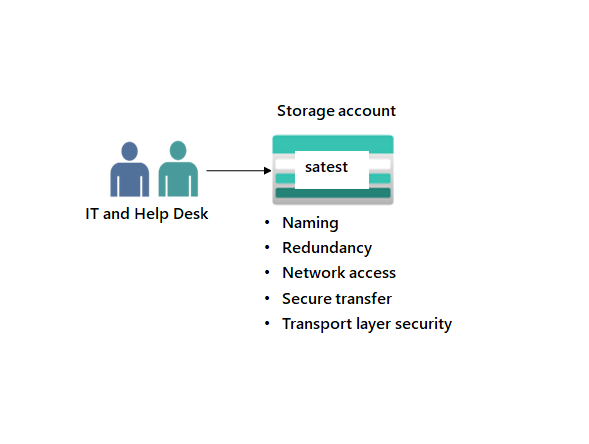
What is Azure Storage?
Microsoft Azure's Azure Storage is a cloud storage service that offers scalable, long-lasting, and secure storage options for a variety of data kinds. It offers a range of services to accommodate varied needs for storage, including:
Storage of enormous volumes of unstructured data, including text, photos, and videos, is best served by Azure Blob Storage. It is frequently used to store application data, distribute content, and backup data.
Here are the steps to accomplish the task for providing a storage for the IT department testing and training.
Create a resource group and a storage account.
Step 1: Create and deploy a resource group to hold all your project resources.
- In the Azure portal, search for and select
Resource groups.

Select + Create.
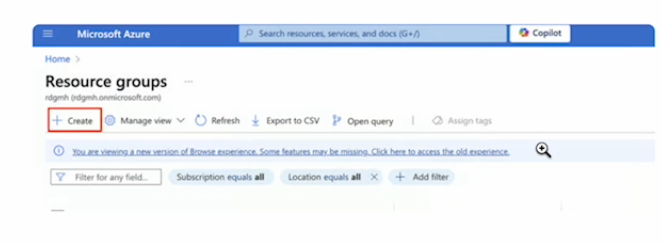
Give your resource group a name. For example,
storagerg.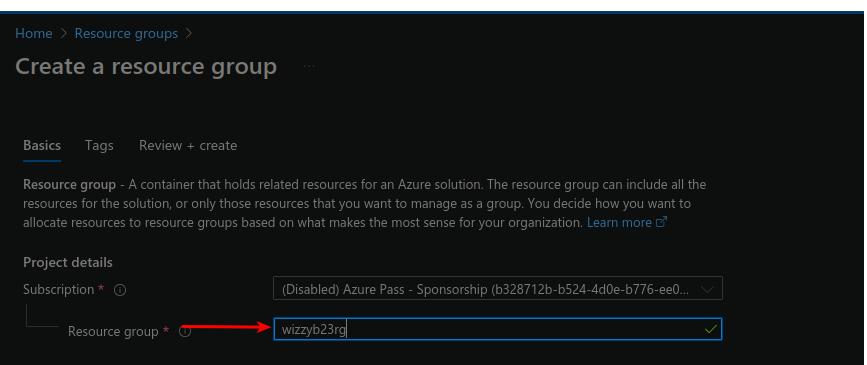
Select a region. Use this region throughout the project.
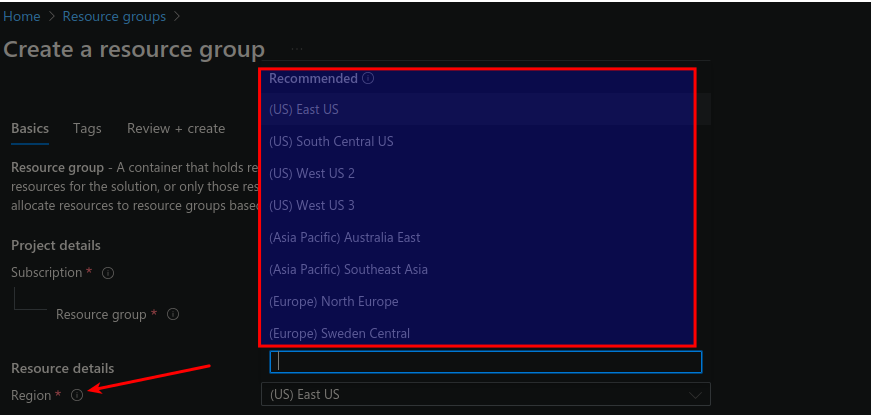
Select Review and create to validate the resource group.
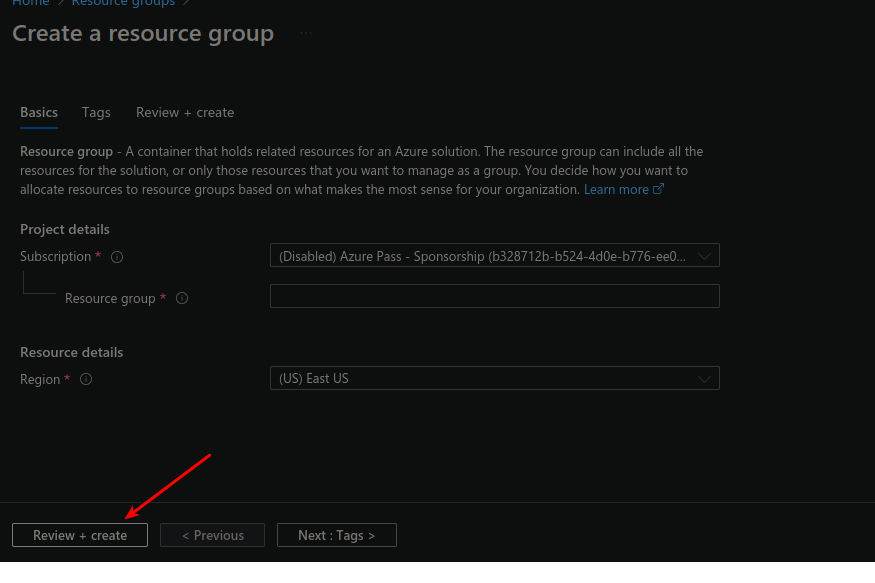
Select Create to deploy the resource group
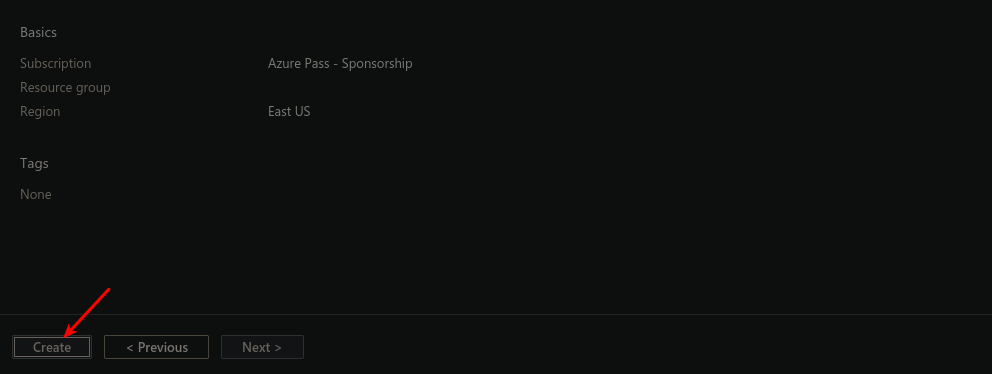
Step 2: Create and deploy a storage account to support testing and training.
In the Azure portal, search for and select
Storage accounts.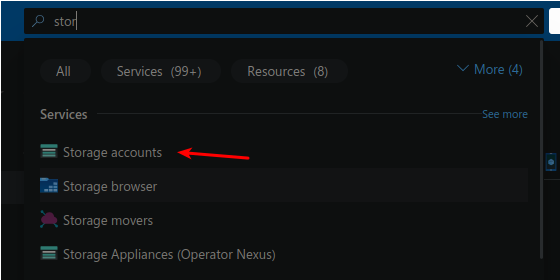
Select + Create.

On the Basics tab, select your Resource group.
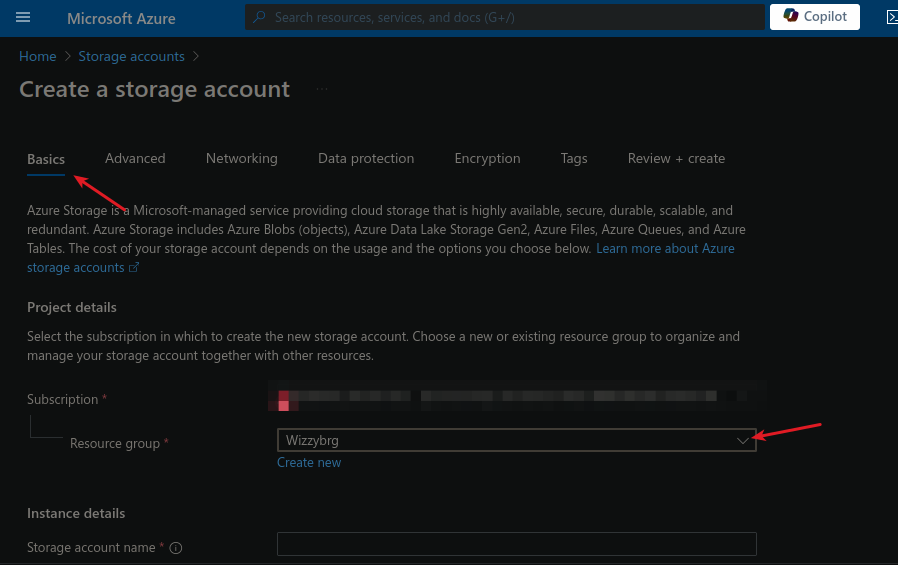
Provide a Storage account name. The storage account name must be unique in Azure.
- Set the Performance to Standard
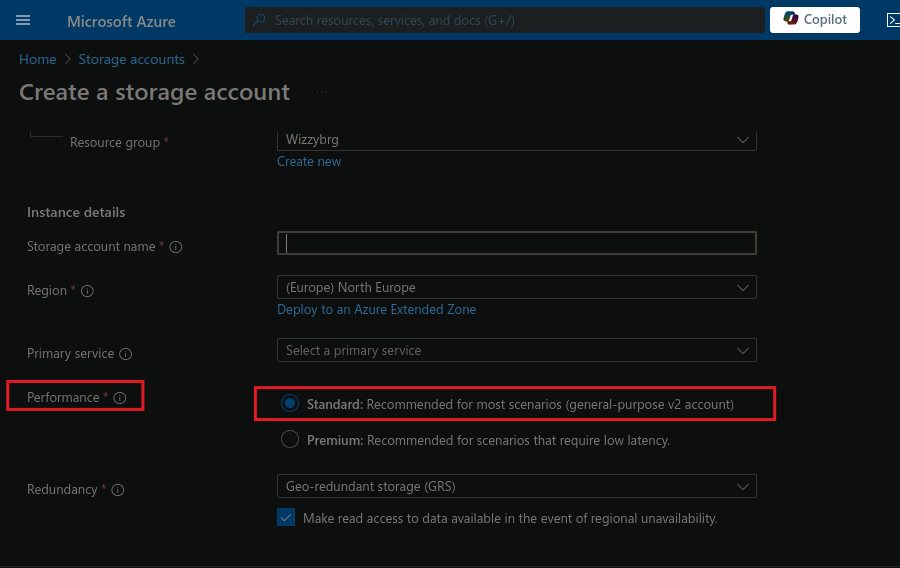
- Select Review, and then Create.
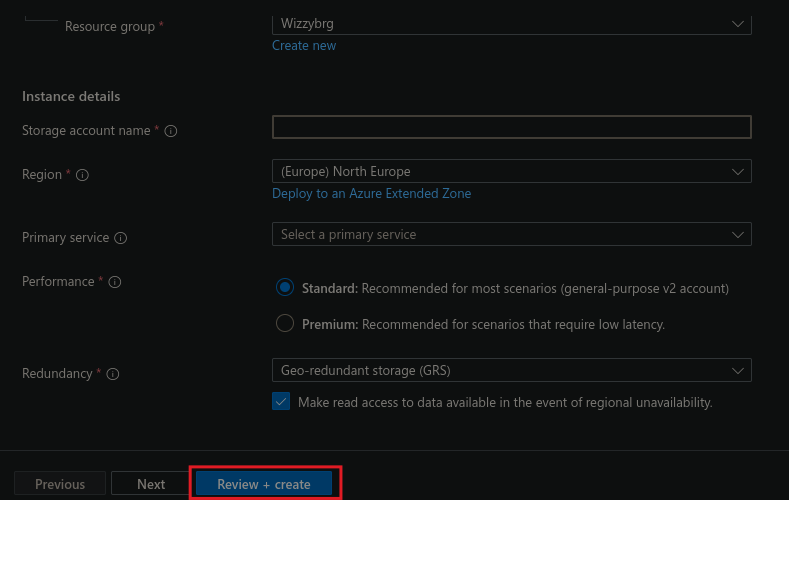
- Wait for the storage account to deploy and then Go to resource.
Configure simple settings in the storage account.
Step 1: The data in this storage account doesn’t require high availability or durability. A lowest cost storage solution is desired.
In your storage account, in the Data management section, select the Redundancy blade.
Select Locally-redundant storage (LRS) in the Redundancy drop-down.

- Be sure to Save your changes.

- Refresh the page and notice the content only exists in the primary location.

Step 2: The storage account should only accept requests from secure connections.
- In the Settings section, select the Configuration blade.
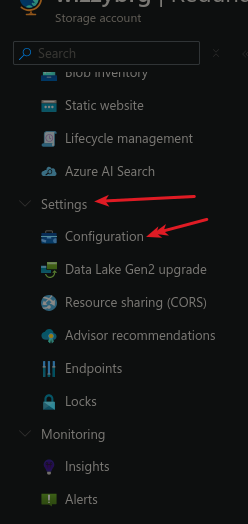
- Ensure Secure transfer required is Enabled.
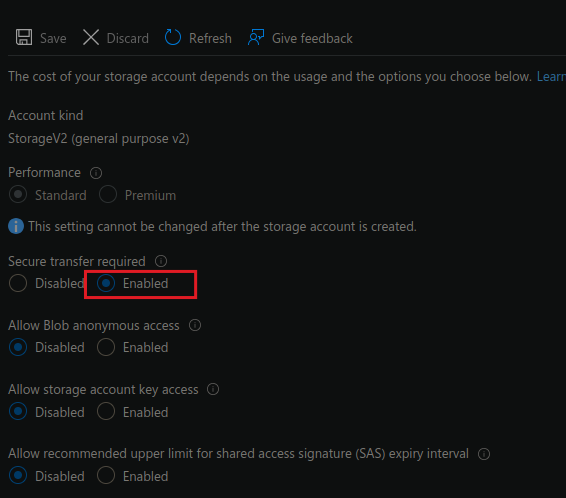
Step 3: Developers would like the storage account to use at least TLS version 1.2.
- In the Settings section, select the Configuration blade.

- Ensure the Minimal TLS version is set to Version 1.2.
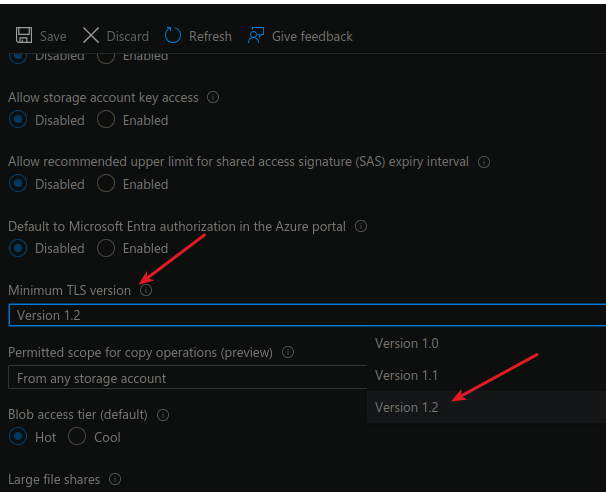
Step 4: Until the storage is needed again, disable requests to the storage account.
In the Settings section, select the Configuration blade.
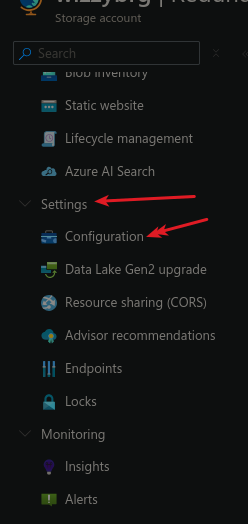
- Ensure Allow storage account key access is Disabled.
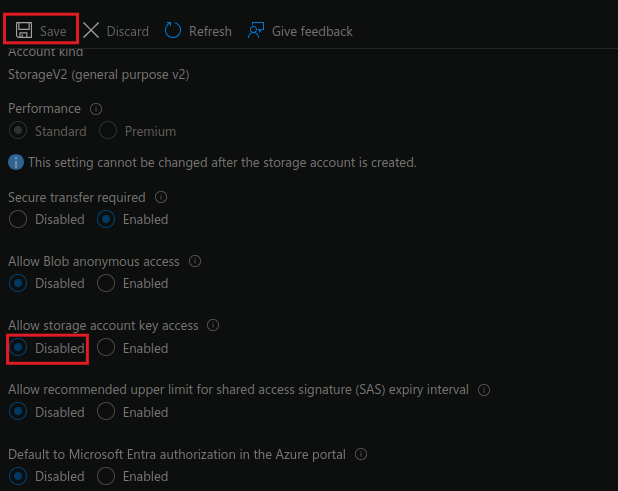
- Be sure to Save your changes.
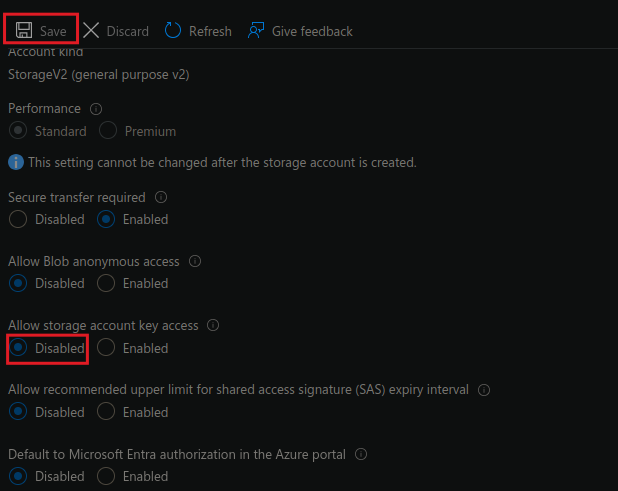
Step 5: Ensure the storage account allows public access from all networks.
- In the Security + networking section, select the Networking blade.
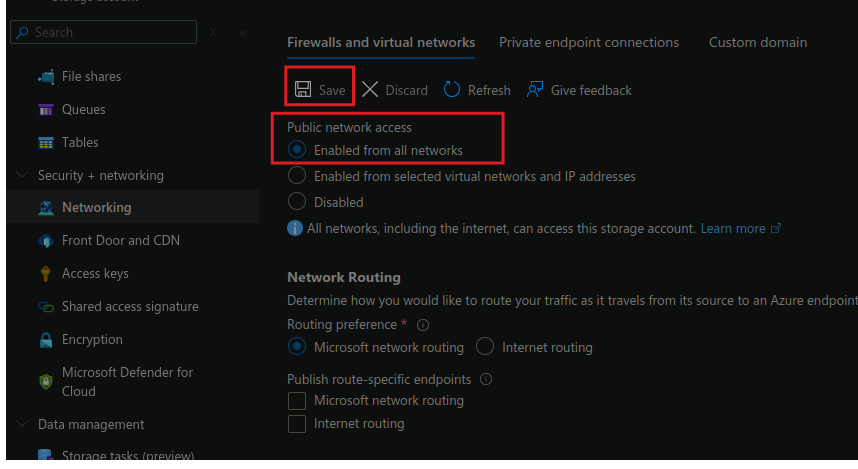
Ensure Public network access is set to Enabled from all networks.
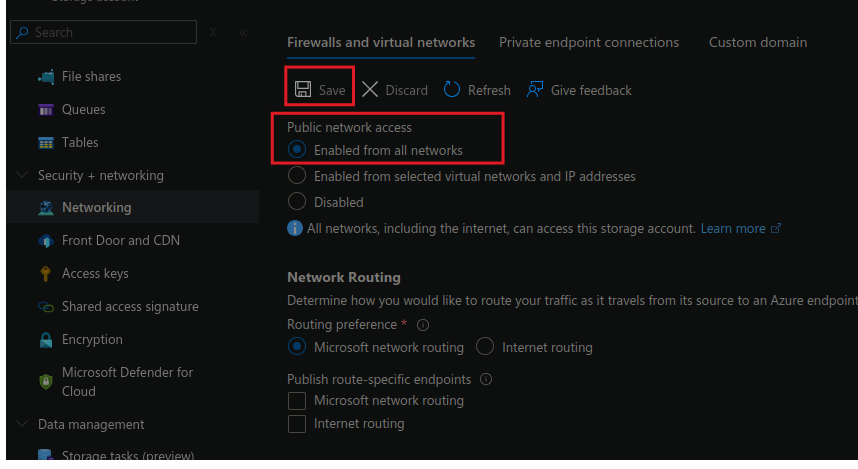
Be sure to Save your changes.
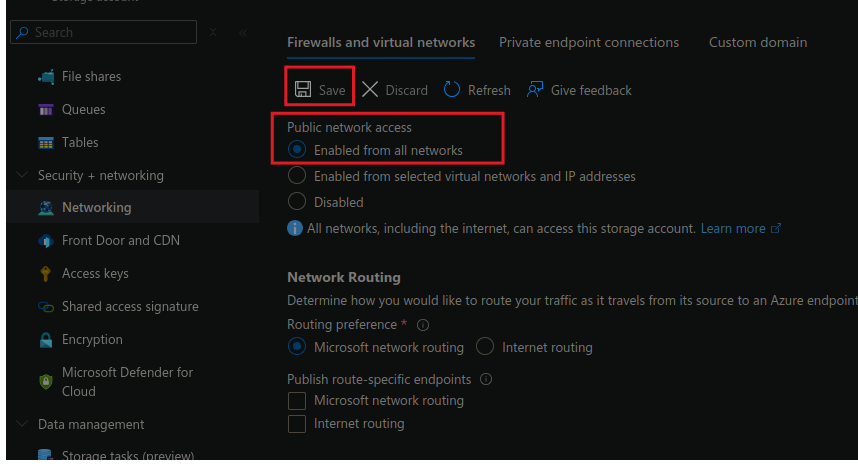
Subscribe to my newsletter
Read articles from Wisdom Benson directly inside your inbox. Subscribe to the newsletter, and don't miss out.
Written by

